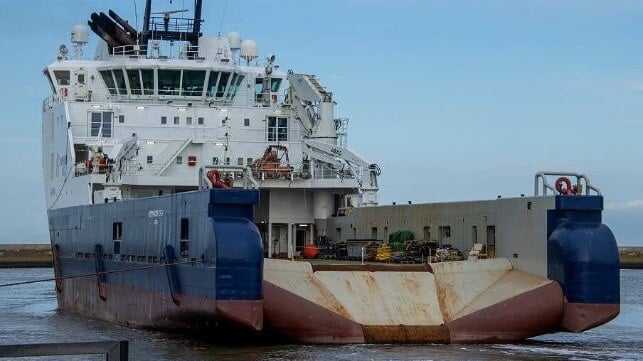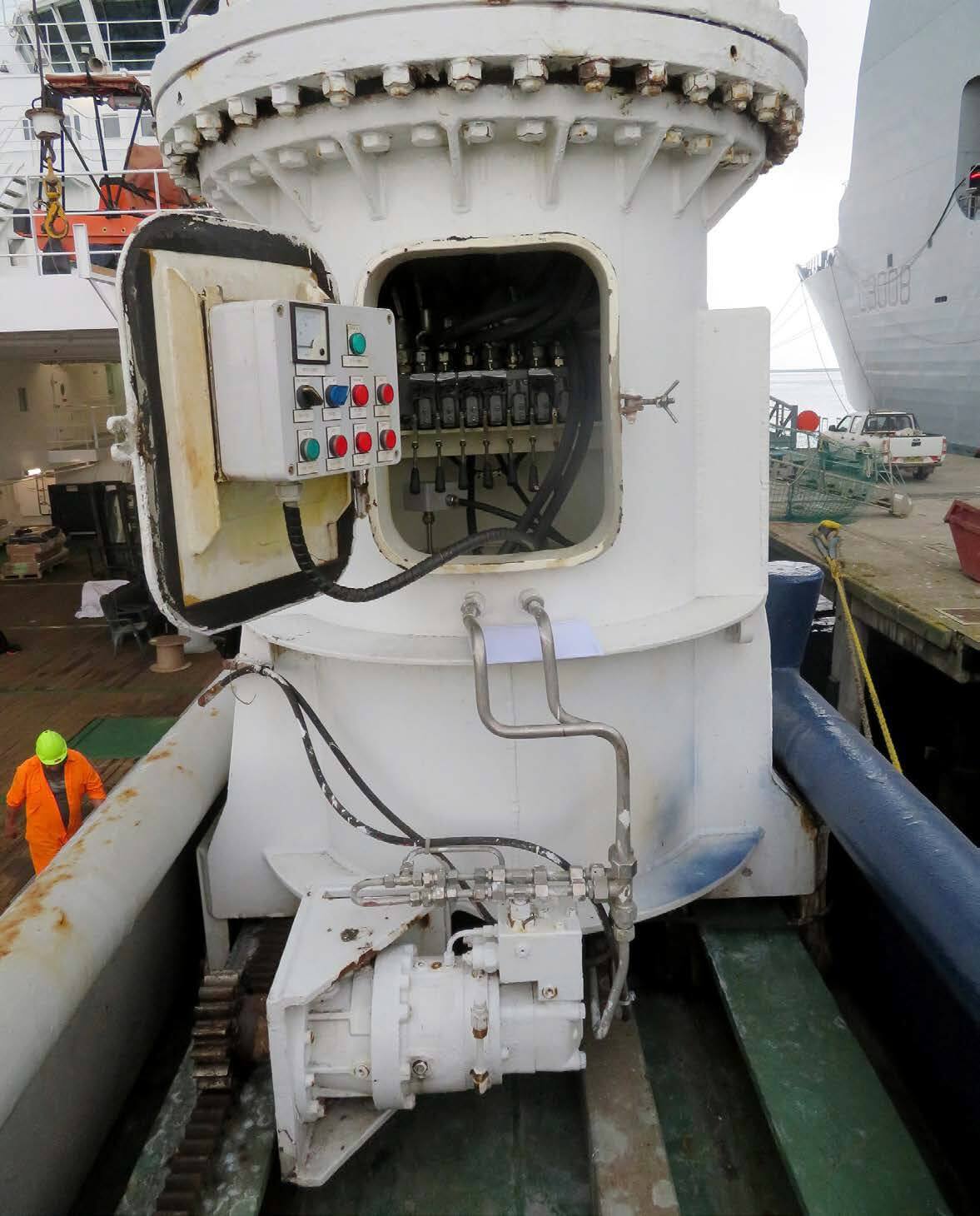Report: Unsafe Crane Training Cost Second Officer His Left Leg

A ship-wide practice of using the emergency controls on a deck crane led to an officer losing his leg aboard a survey vessel in 2022, according to the UK's Marine Accident Investigation Branch.
On August 16, 2022, the Kommandor Orca - formerly the anchor handler Bourbon Orca, which the new operator had recently purchased and renamed - was moored at the port of Portland, UK to prepare for its very first charter as a research vessel. It was just out of shipyard after a yearlong conversion process.
That day, the crew's work included moving deck gear and machinery around the main deck. The second officer and a fitter were moving equipment with a pallet truck, and for some of the heavier pieces of gear, they decided to use the rail-mounted crane mounted on top of the starboard side bulwark.
To operate the crane, the second officer climbed a ladder up onto the crane rail to reach the local hydraulic valve controls, about 12 feet above the main deck level. These controls were intended for emergency use and were hidden inside of a power supply hatch in the crane base, out of everyday view. They were located just above the drive motor for the pinion gear that moved the crane back and forth on its rail; the pinion was unguarded. To see the fitter and the load, the second officer stood with one foot on the bulwark and one on the crane drive motor - a spot the vessel designer had not intended for regular occupancy.
 Local emergency hydraulic controls were located inside a small hatch in the crane base, just above the fore-and-aft traverse drive motor and pinion gear (MAIB)
Local emergency hydraulic controls were located inside a small hatch in the crane base, just above the fore-and-aft traverse drive motor and pinion gear (MAIB)
The second officer used the controls to move two loads around deck, then moved to reposition the crane aft down the track for a third pick. As the crane traveled aft along the rail, he moved his left foot onto the rack, and his overalls got pulled into the pinion. Before he could regain his balance and let go of the traverse lever control, his left foot and lower leg were crushed between the rack and pinion.
The second officer called for help, and the fitter ran up to assist him. At the officer's direction, the fitter moved the crane forward and freed the officer's badly-damaged leg. The chief officer arrived quickly and called for first aid, and he applied a tourniquet to the second officer's leg. A company representative - who was on board to watch the preparations - called for emergency medical assistance, and a helicopter was dispatched to carry the victim to the hospital.
The man's leg was beyond surgical repair, and it had to be amputated below the knee.
Kommandor Orca had been purchased by the new operator in September 2021, one year before the casualty. It had been in cold layup, like many offshore vessels at the time, and there was no offgoing crew to provide an operational handover or training for the new operators. The officers who commissioned the vessel for the new operator had to formulate a new SMS for the ship based on their own knowledge and the information they had available on board.
The rail-mounted deck cranes atop the main deck bulwarks could be operated with a wireless remote control unit or the console on the bridge aft station. Both methods were functioning for the starboard crane, but the wireless unit for the port side wasn't functioning, so the crew had developed a method to use the local hydraulic valve control in the crane base. The OEM's manual noted that this was for emergency use only, but the crew was not aware of this restriction. To make the emergency controls easier to operate for everyday use, the crew had used duct tape and marker to note the function of each lever.
When the second officer arrived on board in early August and received his familiarization training, senior officers trained him to use the emergency controls only, and he was unaware that the wireless remote control unit or the bridge control console existed. He was issued a certificate of completion of crane training in accordance with the company SMS. On the day of the casualty, he was operating the crane in the manner that he and other crewmembers had been instructed, and the hazards of the arrangement were not picked up by safety management procedures (the lifting plan, permit to work or toolbox talk).
"Operating the crane from the local controls in the pedestal was unsafe," concluded MAIB. "The crane operation training was conducted by the senior officers and so the crew might have assumed that they were being instructed in the correct methods. However, the requirement to operate the crane while working at height with no guardrails or restraints, and near to the unguarded rack and pinion gearing, was a clear sign that the process was flawed."
The vessel operator revised its SMS, installed guards and an emergency stop on the crane base, mandated the use of the remote control arrangements for the crane, retrained its crew with a third-party crane training provider, and provided the injured second officer with support and continued employment.
